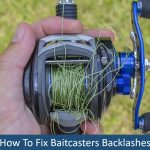Introduction
Welcome to our comprehensive guide on baitcaster tips for beginners. If you’re new to the world of baitcasting reels and looking to improve your skills, you’ve come to the right place. In this article, we will provide you with expert advice, techniques, and insider tips to help you become a proficient baitcaster angler. Whether you’re aiming to catch trophy fish or simply enjoy a relaxing day on the water, mastering the art of baitcasting will undoubtedly enhance your fishing experience.
Understanding Baitcasting Reels
Before we dive into the tips and tricks, let’s start by understanding the fundamentals of baitcasting reels. Baitcasters are popular among experienced anglers due to their precision, casting distance, and ability to handle heavy lines and lures. Unlike spinning reels, baitcasters require a bit more skill to operate effectively.
Baitcasting reels feature a revolving spool that sits atop the rod. The line is drawn directly from the spool when casting, allowing for better accuracy and control. Additionally, baitcasters offer various gear ratios, allowing anglers to retrieve lures at different speeds.
Choosing the Right Baitcasting Reel
Selecting the right baitcasting reel is crucial for beginners. Consider the following factors when making your decision:
Gear Ratio
The gear ratio determines the speed at which the line is retrieved. A higher gear ratio, such as 7:1, means faster retrieval. For beginners, a moderate gear ratio of around 6:1 is recommended, as it provides a balance between speed and power.
Braking System
Baitcasters come with different braking systems, such as magnetic and centrifugal brakes. These systems control the rotation of the spool during casting, preventing backlash or bird’s nests. Opt for a reel with an adjustable braking system to fine-tune the casting performance according to your skill level.
Bearings and Construction
Look for reels with multiple high-quality bearings, as they contribute to smoother operation. Additionally, choose a reel made of durable materials like aluminum or graphite for longevity and performance.
Proper Baitcasting Techniques
Now that you have your baitcasting reel, let’s delve into the essential techniques to improve your casting accuracy and distance:
Thumb Control
The key to successful baitcasting lies in mastering thumb control. Use your thumb to regulate the spool’s rotation during the cast, preventing backlash. Practice feathering the line with your thumb to achieve a smooth and controlled release.
Smooth Casting Motion
Maintaining a fluid casting motion is crucial for accurate and long-distance casts. Start with a low trajectory, gradually increasing the angle as you gain confidence. Avoid applying excessive force, as it can lead to backlash or inaccurate casts.
Casting with the Wind
When casting against the wind, adjust your casting angle to allow the wind to carry your lure. Aim slightly to the side of your target, and let the wind assist in extending your casting distance.
Selecting the Right Bait and Lure
Choosing the appropriate bait and lure combination is vital to attract your target species. Consider the following factors when selecting your setup:
Research and Local Knowledge
Research the local fishing conditions and target species in your area. Talk to fellow anglers or visit bait shops to gather valuable insights on successful bait choices.
Matching the Hatch
Observe the natural prey available in the water. Select lures that mimic the size, shape, and movement of the baitfish or other aquatic organisms in the area. This increases the chances of enticing a strike from hungry fish.
Experimentation and Adaptation
Don’t be afraid to try different bait and lure combinations. Fishing conditions can change, and what worked one day may not work the next. Keep experimenting and adapt your tactics accordingly.
Maintenance and Care
To ensure optimal performance and longevity of your baitcasting reel, proper maintenance is essential. Here are a few tips to keep your reel in top shape:
Regular Cleaning
Clean your reel after every fishing trip to remove dirt, sand, and debris. Use a soft cloth or brush to wipe down the exterior and lubricate the necessary parts as per the manufacturer’s instructions.
Line Inspection
Regularly inspect your fishing line for any signs of wear or damage. Replace the line if it shows any fraying or weak spots to avoid unexpected line breaks during a crucial catch.
Storage
Store your baitcasting reel in a cool, dry place, away from direct sunlight. Avoid exposing it to extreme temperatures, as they can affect the reel’s performance and integrity.
Conclusion
Congratulations! You now possess a wealth of knowledge on baitcaster tips for beginners. By understanding the mechanics of baitcasting reels, selecting the right equipment, mastering essential techniques, and making informed bait and lure choices, you’re well on your way to becoming a proficient baitcaster angler.
Remember, practice makes perfect. Dedicate time to hone your skills, and don’t get discouraged by initial challenges. With patience, perseverance, and the knowledge you’ve gained from this guide, you’ll soon be casting like a pro and enjoying successful fishing adventures. Tight lines and happy baitcasting!






